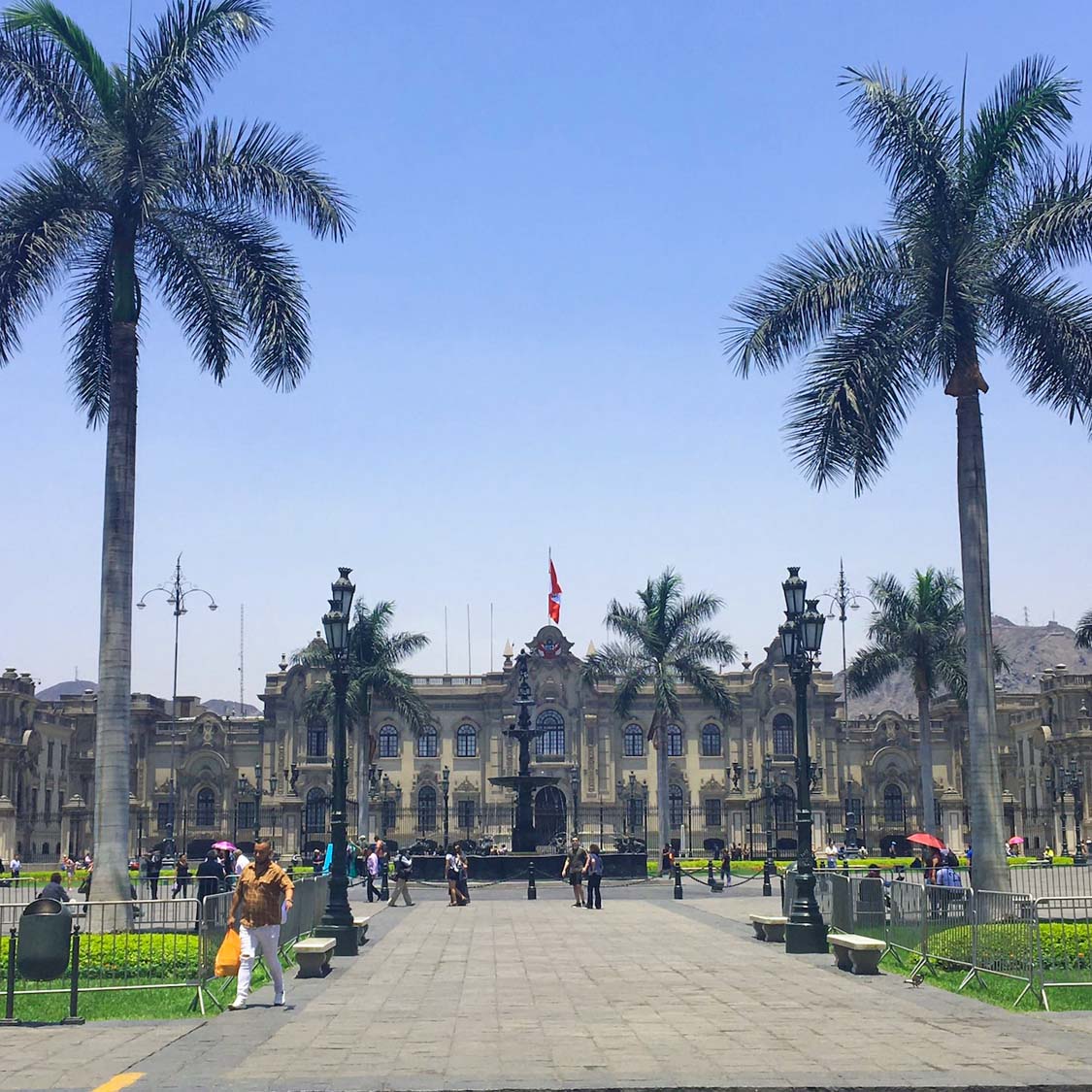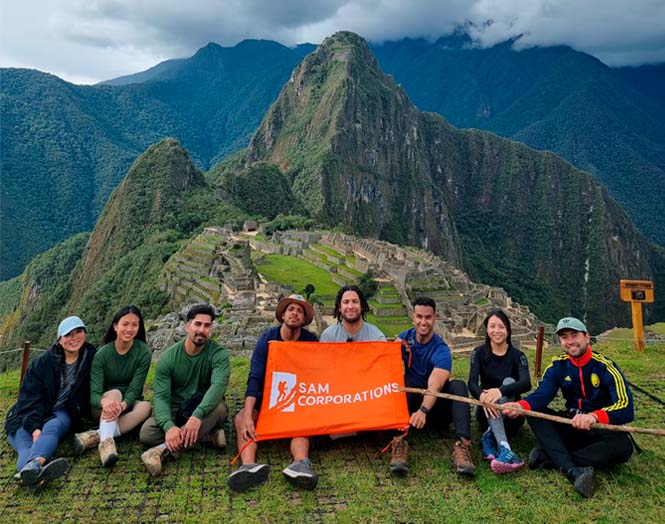
This full-day excursion will give you an in-depth view of Lima’s stunning Colonial, Republican, and modern architecture, as well as its religious and archaeological sites. In private service, this itinerary is first and foremost flexible, to offer a broad canvas that will illustrate Peru’s ancient past, frame the present and pose transcendental questions about its future. We cover Lima’s top places from all its epochs: the pre-Hispanic, the time spent under Spanish rule and the independent, modern times which started in 1821.
Lima
Private Groups
Group
Cultural
Ease
Any date
Pick up at your hotel by the driver and the tour guide. After a brief orientation talk, you are on your way to Lima’s Spanish Colonial Center, declared a UNESCO World Heritage Site in 1988.
Pass archaelogical monuments, including the restored pre Coumbian ruins of Huayamarca and the Huaca Pucllana. The drive will take you down the historic thoroughfares, like Avenida Paseo Colon, designed by Italian sculptor Salvatore Ravelli at the beginning of the 20th Century.
The walking tour starts in the Plaza San Martin, an often overlooked architectural gem built in 1921 during the presidency of Augusto Leguía. It was built to commemorate Peru’s 100-year anniversary of declared Independence from Spain. Impeccably preserved Republican and neo-classic buildings surround the palatial plaza and its central monument to Peru’s liberator, José San Martín.
On the northeast corner stands the Hotel Bolivar, built in 1924, once Peru’s finest hotel and a regular stomping ground for Hollywood stars and European royalty.
A stroll down the busy pedestrian thoroughfare Jirón de la Unión offers a glimpse of myriad hidden architectural treasures.
On a far corner, you enter the Iglesia La Merced, one of Peru’s great architectural masterpieces, with its richly sculpted Baroque facade. Built atop the site where Lima’s first Latin Mass was celebrated, the original church was razed in 1628 to make way for the current building.
Afterward, arrive at the Plaza de Armas: From here, the direction you take and the historic sites you tour will depend on the sites that you wish to see.
You can choose to explore the catacombs of San Francisco Church. The church served as a colonial era public cemetery where commoners were buried until 1821. Their bones are today neatly arranged in a macabre display.
You can visit the Church of Saint Peter to view the painting of the coronation of the Virgin by Bernardo Bitti. These Italian Jesuit missionaries, profoundly impacted Spanish Colonial religious art and helped define the Cusco Baroque style of painting.
Your guide might suggest a tour of the Cathedral, the last resting place of Conquistador Francisco Pizarro. Or you could explore the Iglesia Santo Domingo, one of Lima’s most storied religious sites.
Inside is a complex of ornate courtyards lined with baroque paintings and decorated with Moorish Spanish tile. With its exquisite dome and expansive convent, the church is best known as the resting place of three important Peruvian saints: Santa Rosa de Lima, San Juan Macías, and San Martín de Porres.
After lunch, take a guided tour of Casa de Aliaga, Lima’s oldest residential colonial mansion. Built in 1535 by Spanish Conquistador Jeronimo de Aliaga, this ornate example of colonial architecture and design has been home to 17 generations of his descendents.
The mansion’s Golden Salon, lined with incredible gold-leaf framed mirrors, a beautiful upper gallery, the court yard and the family chapel are all testaments to how life was lived centuries ago.
Following your time in Casa de Aliaga, drive to Larco Museum, with its magnificent collection of more than 45,000 artifacts. The Larco is also famous for its gallery of “huacos eroticos,” explicit ceramic depictions of sexual acts, mostly crafted by the Moche, a highly organized, class-based society that dominated Peru’s northern coast from 100 to 800 C.E. (Common Era).
You will see why Peru was, just in the last few years, recognized as the world’s Sixth Cradle of Civilization, with Egypt, Mesopotamia, India, Mexico and China. Learn about the continuation of a shared cosmo vision that bound Peruvian cultures together. The earliest known civilizations on through the later Wari, Mochica and Inca empires, until the Spanish Conquest of the 16th century.
After a full day we transfer you back to your hotel.
Huayamarca
The Huaca Pucllana
The Plaza San Martin
Iglesia La Merced
Casa de Aliaga
Larco Museum
Sam Corporations
Our company is 100% locally owned. We directly contribute to economic development and environmental sustainability in Peru.
The quality of our service is one of our most important values which demands all our effort, determination, and courage to be successful in what we are doing and the services we provide
We aim to have a positive impact in all the areas that we visit. Through our training sessions and social projects, we empower women, indigenous communities and children
Our groups never exceed 10 people, giving you a personalized tour in our small comfortable vans
Interested in visiting only specific destinations? No problem, all our packages can be fully customized to suit your budget and schedule. Contact our travel advisors to plan the most comprehensive trip of a lifetime.
We commit socially and culturally to the community and adapt our business strategies to the preservation of the environment

Quality
Contact our travel advisors to plan the most complete trip of your life.
Simplified ease of communication, text us on WhatsApp, email or call us.
Our guides are local and have vast knowledge in Peruvian culture and history.
100% local company. Development and environmental sustainability
Our groups never exceed 10 people, giving you an unforgettable experience
Discover an exceptional journey where perfection meets adventure.